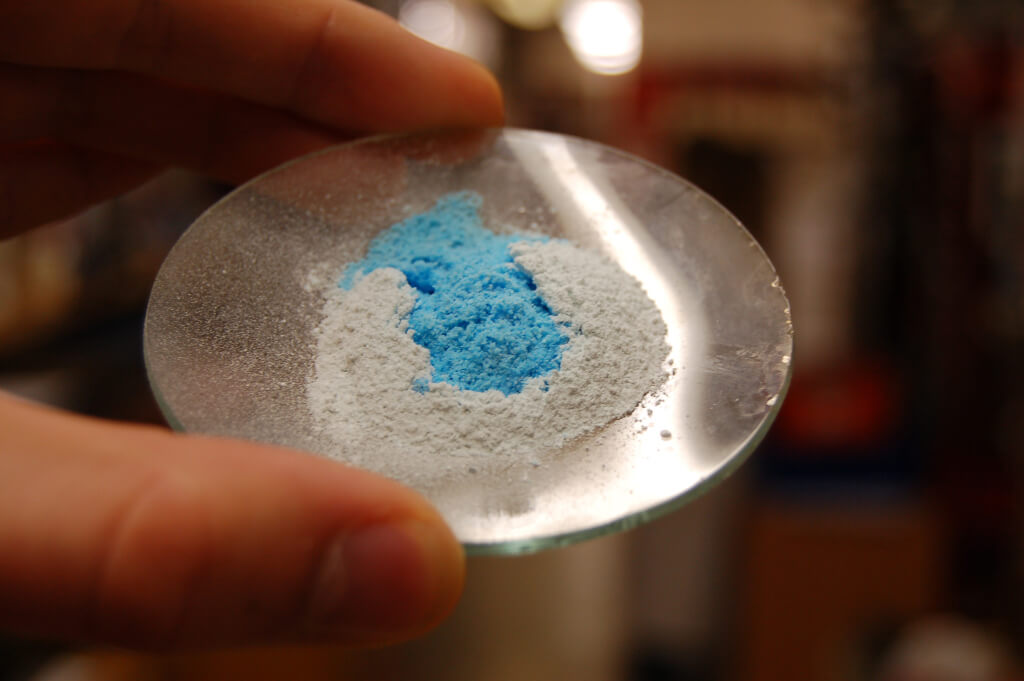ZIMSEC O Level Combined Science Notes: Experiment: investigating reversible reactions
Aim: Investigating reversible reactions
Materials: boiling tube, test tubes, copper sulphate crystals,solid ammonium chloride, red litmus paper, blue litmus paper, dilute hydrochloric acid, sodium hydroxide solution, potassium chromate solution, tongs

Heating ammonium chloride. Image credit youtube.com
Method A
- Place a few copper sulphate cystals in a clean dry test tube
- Heat the test tube strongly until no further change occurs
- Leave the test tube to cool
- Allow some of the liquid that condenses on the sites of the test tube to mix with the residue/ Add a few drops of water using a droper
Results and Observations

Anhydrous (white) and hydrated copper sulphate (blue) Image credit MediaWiki
- Water is driven out of the copper sulphate cystals when its heated
- This forward reaction is endothermic
- The copper sulphate turns white
- When water is added to the white powder it turns blue
- Heat is produced as the backward reaction is exothermic
- The word equation can be written as:
- \text{hydrated copper sulphate (blue)}\rightleftharpoons\text{anhydrous copper sulphate (white)}
- The liquid that is given off is water
- Water can also be detected using blue anhydrous cobalt(II) chloride.
- This turns pink in the presence of water.
Method B
- Place a spatula full of ammonium chloride in a dry boiling tube
- Dampen a piece of red litmus paper and place it inside the open end of the test tube
- Dampen a piece of blue litmus paper and place it inside the test tube
- Tilt the test tube so that the red litmus is on the upper side when the ammonium chloride is heated
- Stop heating when there is no more solid at the bottom of the test tube
Results and Observations
- When the ammonium chloride is heated it breaks down into
- Ammonia and hydrogen chloride
- \text{ammonium chloride}\rightleftharpoons\text{ammonia+hydrogen chloride}
- The forward reaction is endothermic
- The ammonia and hydrogen chloride can combine to form ammonium chloride in an exothermic reaction
- When the ammonia chloride solid is heated it turns into two gases
- These condense(react) on the cooler upper end of the boiling tube and turn back into solid ammonium chloride
- The ammonia dissolves and turns the red litmus paper blue
- The hydrogen chloride dissolves on the wet litmus paper and turns the blue litmus paper red
Method C
- Place a 1cm depth of potassium chromate into a test tube
- Slowly add drops of dilute hydrochloric acid until the colour changes
- Add drops of sodium hydroxide until the colour changes again
Results and observations

Potassium dichromate (left) and potassium chromate. Image credit ucdavis.edu
- Potassium chromate solution has a yellow colour
- If hydrochloric acid is added to the solution it turns orange (right) side
- If sodium hydroxide is added the solution turns yellow again
To access more topics go to the Combined Science Notes page.



